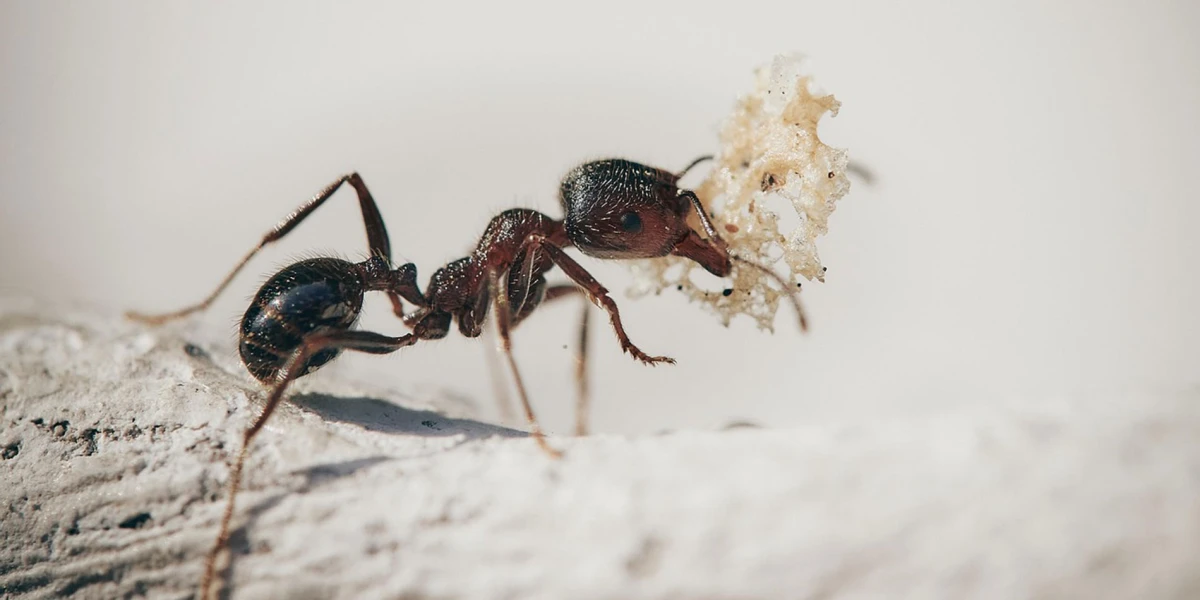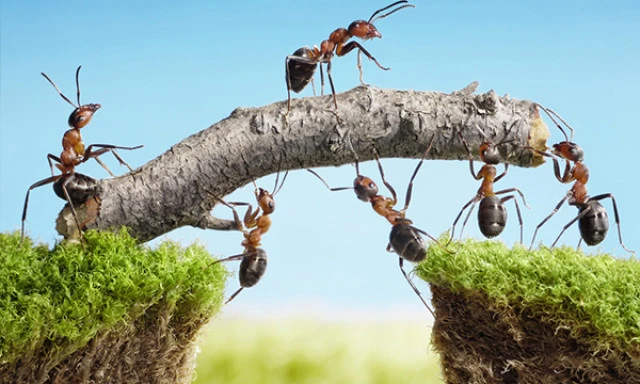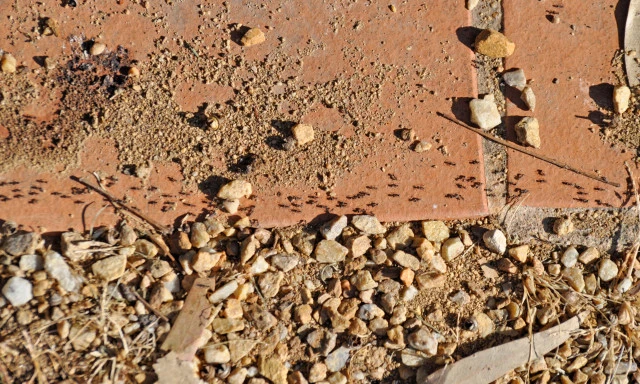One of the most common queries we get at Kiwicare is about how to deal with invasive ants. Every summer, the searches on our website go through the roof and the calls and emails to our customer services team skyrocket. Kiwicare has spent many years researching ants and how best to control them. As a result of this research, we’ve developed an easy 1-2-3 Step process to kill them off and keep them away, but first we’ll explain a little more about ants, so that you have a better understanding of why a one step process probably won’t work long term.
We’ve all been there, the ants invade your house, you shoot them with some fly spray or even a specialist ant spray and wipe them up, but the next week they’re back. Or you might put some bait down and the ants walk right past it and keep on being a nuisance. They’re relentless and it’s enough to drive you around the bend. So why don’t the sprays work and why does your bait get ignored, despite what you might think it’s not because the products you’ve bought are rubbish. More importantly how do you get rid of them and keep them away?
Why Sprays Alone Don’t Work
Surface sprays may kill the ants you see, but the nest is hidden underground or in walls. Unless the queen is eliminated, the colony keeps sending out more workers. That’s why baiting and nest treatment are vital steps.
Why Do Ants Ignore the Bait?
Ants in New Zealand eat either sugar or protein depending on where the colony is in its lifecycle. Ants switch between feeding on either protein or sugar depending on the needs of their colony. They feed on sugar when they are active and building their nests or foraging and on protein when they need nourishment to feed their young. Ant baits will either be sugar based, or protein based and on the rare occasion a mix of both. So, if you’re putting out sugar baits while they’re nurturing their young, they’ll completely ignore it because sugar is not what they need. So how do you combat this, it’s simple if you’ve put a protein bait out and it’s being ignored then switch to a sugar bait and you’ll find they’ll be much more interested in it. To get a deeper understanding of this and for a few more tips view our article Why are ants ignoring the bait.
How do you know if need a sugar or protein bait?
Any easy way to identify what type of bait you need is to observer how the ants are behaving. If they're in your sugar and fruit bowls you need a sugar-base bait like Kiwicare's NO Ants Liquid Ant Bait. If they're in your pet's food bowl you need a protein-based bait like Kiwicare's NO Ants Nest Killer Gel Bait.
Kiwicare's 1-2-3 Ant Control Programme
- Step 1: Bait
Place many small amounts of NO Ants Nest Killer Gel Bait (which is a protein-based bait) or NO Ants Liquid Bait (which is a sugar-based bait) inside and outside the house where ants are seen or have been seen. To make clean up easier and prevent marks on porous items like pavers or bricks, we recommend using specialist bait stations or placing the bait in a bottle top or jar lid.
The aim is to get as many of the foraging workers (less than 5% of a colony) to take the bait back to the nest at the same time as possible. They then feed the bait to other workers, larvae and queens. Continue baiting intensively for 1-2 weeks.
Placement:
- Place ant bait along ant trails and near entry points but always keep it out of reach of children and pets.
- Use indoors along skirting boards, in kitchens, bathrooms, laundries and garages.
- Outdoors, place bait near trails, gardens, paths, and close to nests.
Tip: Don’t spray near bait placements — you want ants to freely take the bait back to the nest.
- Step 2: Barrier
After 1-2 weeks use the NO Ants Barrier Spray as a barrier around the house; base of walls, breaker gaps, vents, doorways, windows and other potential entry points (where ants like to crawl). Ants will avoid the treated areas as much as possible. If they are forced to cross the barrier the individuals will die.
If the ants are coming in from outdoors and you have flowerbeds, lawn or gravel close to the house apply LawnPro Protect granules to these areas. This provides a curtain barrier deep in the soil to prevent ants tunnelling under the house. LawnPro Protect granules can also be used around shrubs and plants where the ants may be farming sap sucking insects such as aphids, scale and mealy bugs. You heard that right, ants actively farm other insects for food! The ants protect the sap suckers and feed on the honeydew they produce. The LawnPro Protect granules controls the ants where they would move up the plants.
Tip: DO NOT use barrier treatments or repellents on the nest or in the immediate area around it. This will cause the ants to move out and create multiple new colonies making your ant problem worse.
- Step 3: Destroy
If the nest sites can be identified apply NO Ants Ant Sand to the nest entrances and an area 1 metre around. It will usually be somewhere warm and dry like under pavers, rocks, driveways, etc. you may see the trails going down a hole between pavers or at the edge of a flowerbed etc. NO Ants Ant Sand is non-repellent and so will not cause budding. Budding is when the colony ‘decides’ to leave the nest site and multiple queens take portions of the colony off in different directions to set up many new nest sites.
Tip: Large colonies may need more than one treatment, especially in warm months when multiple queens are producing new workers.
Prevention Tips
Eliminate food sources: Keep benches and floors clean, wipe up spills, and store food in sealed containers.
Remove water sources: Fix dripping taps and avoid standing water around the home.
Seal entry points: Close gaps around windows, doors and foundations. This also helps with insulation and keeps other critters like rats and mice out during the cooler months.
Maintain: Every autumn and spring treat your property with an insect barrier like NO Bugs Super or NO Ants spray. Spray around doors, windows and entryways to prevent bugs entering your home. If you notice ants starting to emerge follow the 1-2-3 step programme, before they get too established and difficult to control.
In summary
The key to effective ant control is to bait the nest first, then protect your home with barriers and direct nest treatments. Sprays alone won’t solve the problem. But following the 1-2-3 Ant Control Method gives you long-term relief inside and out. Just remember, there may be more than one ant colony on your property. So be sure to do a sweep or your property and Bait, Barrier & Destroy wherever you see ants present.
Are you a visual learner?
Watch our handy video below which talks you through ant control tips and tricks and shows you how and where to place the baits.


